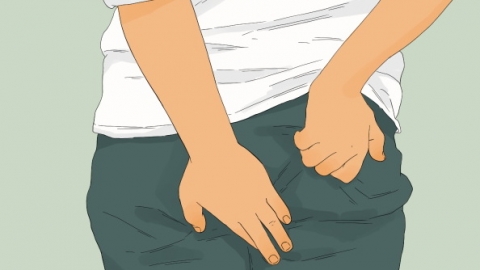What causes bleeding in perianal abscess?
In general, bleeding from a perianal abscess may be caused by friction and irritation during defecation, rupture of local tissues, secondary infection of the abscess, involvement of blood vessels by the abscess, or formation of an anal fistula. It is recommended to seek medical attention promptly, identify the underlying cause, and receive symptomatic treatment under a doctor's guidance. Specific explanations are as follows:

1. Friction and irritation during defecation: When dry stool passes through the perianal area, it can rub against the inflamed mucosa on the surface of the abscess, causing mucosal damage and bleeding, often accompanied by pain during bowel movements. Drink plenty of water daily to keep stools soft, consume fiber-rich foods such as celery and spinach, and avoid excessive straining during defecation.
2. Rupture of local tissue: As the abscess continues to enlarge, internal pressure increases, leading to rupture of the abscess wall and resulting in bleeding, with blood often mixed with pus. Immediately clean the perianal area with warm water and gently press with sterile gauze to stop the bleeding. Avoid squeezing the abscess and seek prompt medical care to prevent the spread of infection.
3. Secondary infection of the abscess: Excessive bacterial growth (e.g., *Staphylococcus aureus*) worsens inflammation, eroding surrounding tissues and causing bleeding, along with increased redness, swelling, heat, and pain at the abscess site. Follow medical advice to use antibiotics such as cefaclor capsules, metronidazole tablets, or levofloxacin hydrochloride capsules to control infection, combined with incision and drainage surgery to remove pus.
4. Abscess involving blood vessels: As the abscess progresses, it may invade perianal capillaries or small arteries, leading to increased and difficult-to-control bleeding, which may appear as dripping or even spurting. Emergency medical treatment is required; incision and drainage of the abscess can both drain pus and stop bleeding. Regular dressing changes after surgery are essential to keep the wound clean.
5. Anal fistula formation: If the abscess is not treated promptly, it may develop into an anal fistula. The fistula repeatedly irritates perianal tissues, making bleeding likely during defecation, often accompanied by persistent pus discharge and itching around the anus. Surgical removal of the fistula and infected tissue (fistulectomy) is required.
In daily life, maintain cleanliness and dryness of the perianal area. Wash with warm water after each bowel movement, wear loose, breathable cotton underwear, and change it frequently. Avoid prolonged sitting or standing, engage in mild physical activities such as walking, follow a light diet, and avoid spicy or irritating foods to support recovery of the perianal region.




